The main purpose of this ongoing blog will be to track planetary extreme, or record temperatures related to climate change. Any reports I see of recently reported ETs will be listed below the main topic of the day. I’ll refer to extreme or record temperatures as ETs (not extraterrestrials).😉
Main Topic: U.S. Plans to Relocate Communities Due to Rising Seas
Dear Diary. Only about twenty years ago most people thought that bad effects from climate change would be decades off. Now during the early 2020s a majority of people are aghast that changes are quite visible, whether they be rapidly shrinking glaciers, widespread wildfires due to heatwaves, or stronger hurricanes. Sea level rise, too, was considered to be a problem that people from the second half of the 21st century would have to deal with, not now. Au contraire.
Plans have been drawn up and are about to be implemented for mainly indigenous communities from Alaska southeast into the Pacific Northwest to move people inland. Here are more details from the New York Times:
Here’s Where the U.S. Is Testing a New Response to Rising Seas
Native American tribes are competing for the first federal grants designed to help move communities away from high water and other dangers posed by climate change.

Old State Route 105 ends abruptly at the edge of the Pacific Ocean, after coastal erosion took out the road near the Shoalwater Bay Reservation in Tokeland, Wash.
Photographs by Tailyr Irvine
Flavelle, who covers climate adaptation, visited three tribes around the Olympic Peninsula that are trying to pull back from the coast.
- Nov. 2, 2022
SHOALWATER BAY INDIAN RESERVATION, Wash. — The van carrying tribal officials veered off the coastal highway, away from the Pacific and onto a dirt path hidden by cedar and spruce trees. After climbing an old logging road, it emerged into a clearing high above the Shoalwater Bay Indian Reservation, half a square mile of oceanfront that’s disappearing fast.
The tribal leaders want to relocate to the remote hilltop where they were standing, despite its uneven terrain. “If you can believe it, this is the most suitable land we have for building,” said Quintin Swanson, treasurer of the 471-member tribe. Moving up the mountain could cost half a billion dollars, he said.
As climate change gets worse, tribes like Shoalwater Bay are being squeezed between existential threats and brutal financial arithmetic. Consigned to marginal land more than a century ago by the United States government, some tribes are now trying to relocate to areas better protected from extreme weather yet lack the money to pay for that move.
In response, the Biden administration has created what appears to be the first program in American history specifically designed to help relocate communities threatened by climate change. The Department of the Interior is now deciding which tribes will win funding this year — and which will have to keep waiting as their land falls farther into the sea.
That decision, expected soon, is likely to reverberate far beyond Indigenous Americans, by establishing a model for other agencies to follow.
The federal government has been quietly trying to shift its approach away from endlessly rebuilding after disasters and toward helping the most exposed communities retreat from vulnerable areas. But moving is expensive, and as disasters intensify, demand from communities to relocate will only increase, straining the government’s ability to pay for it.
That makes the new program both test case and precedent for perhaps the most challenging dilemma facing the United States as it adapts to climate change: How should the government decide which places to help first?
“That is the toughest question,” said Bryan Newland, assistant secretary of Indian Affairs at the Interior Department.
Mr. Newland, a citizen of the Bay Mills Indian Community, conceded that not every tribe that needs help will get money through the program. And even the winning tribes won’t get all the funds they need to move.
Still, he said, “we’ve got to start somewhere.”
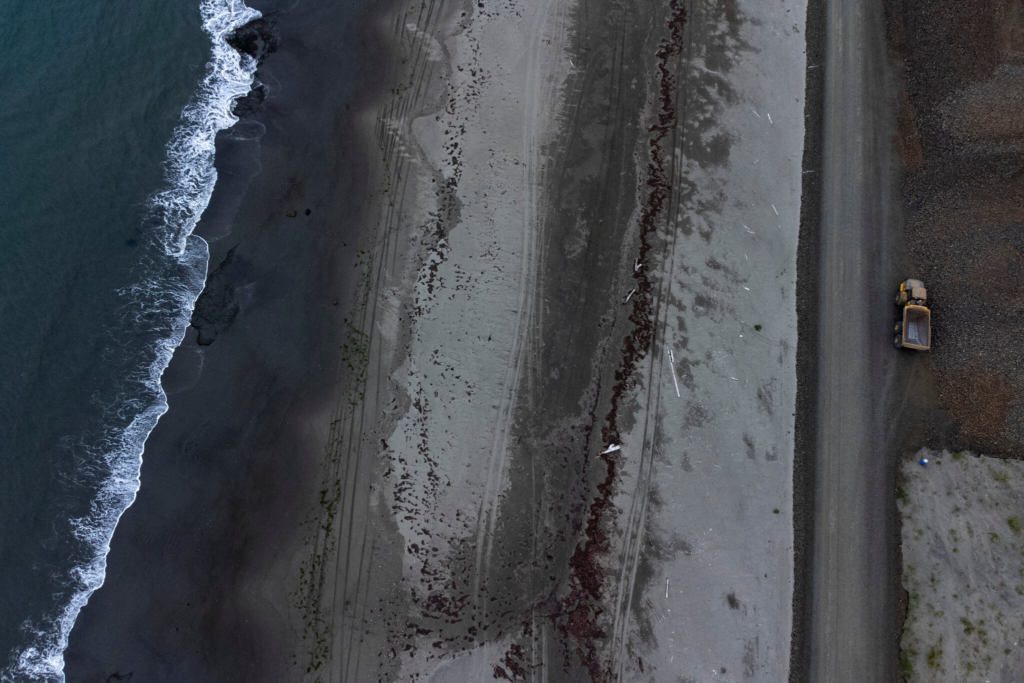
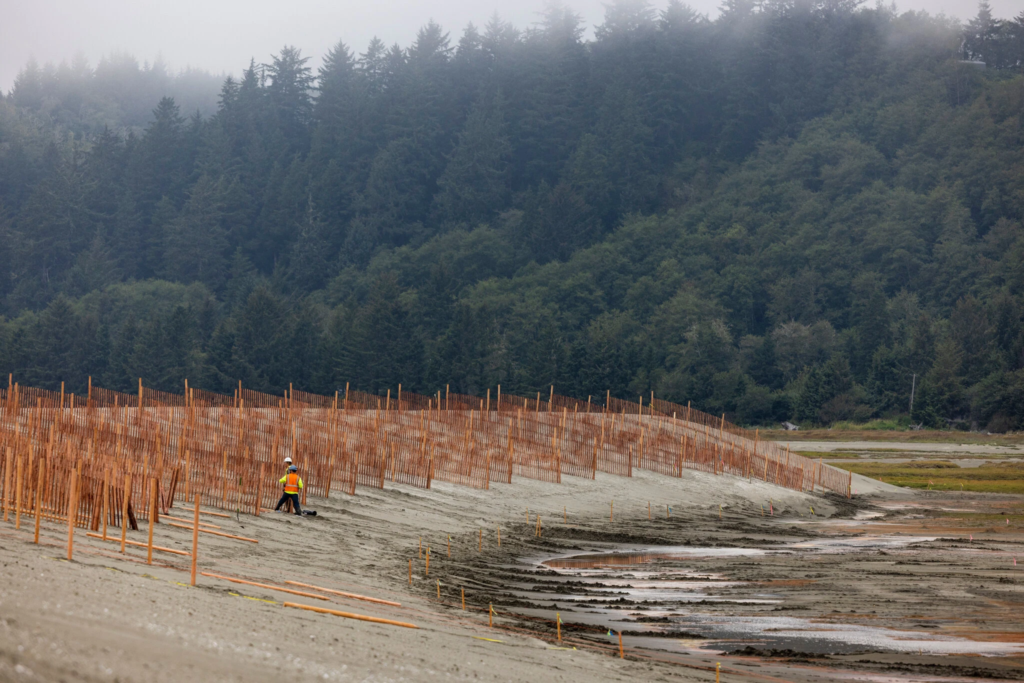
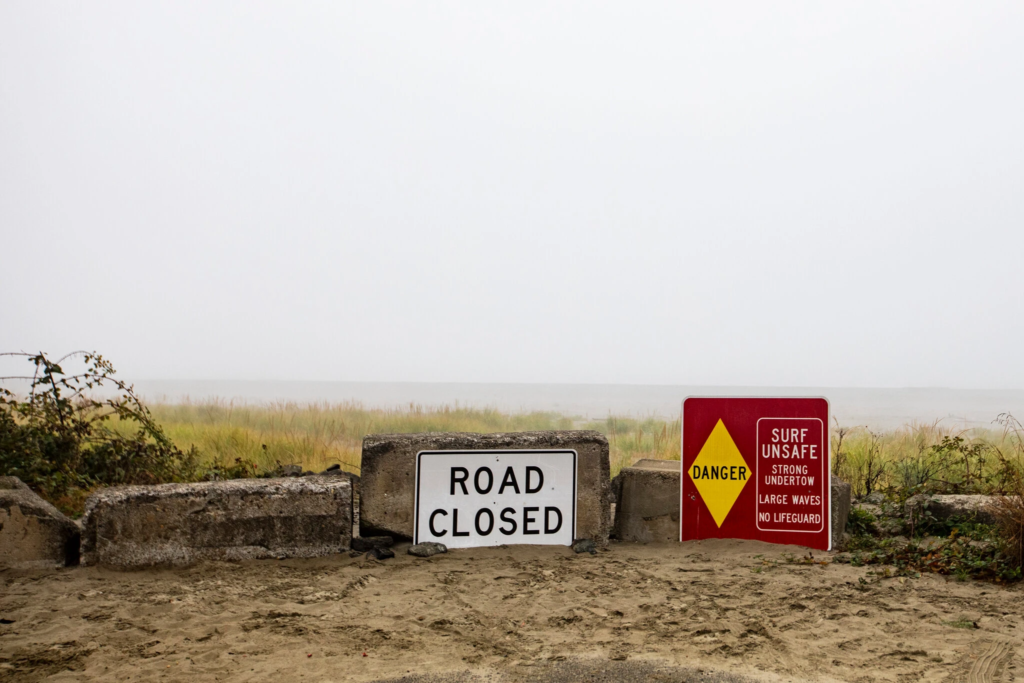

Top, the U.S. Army Corps of Engineers is building a dune to protect the Shoalwater Bay Reservation. Bottom, a sign warning of a washed-out road near the reservation, and a house the Jamestown S’Klallam Tribe hopes to relocate away from Sequim Bay.
The Biden Administration’s Environmental Agenda
- ‘Climate Smart’ Farming: The Biden administration has committed $22 billion toward Agriculture Department programs using these techniques, which are a key part of the agency’s plan to address a warming planet.
- Inflation Reduction Act: The new law, which invests billions into climate and energy programs, represents America’s largest investment to fight climate change.
- Climate Team Changes: John Podesta, who led the Obama White House on climate strategy, will oversee $370 billion in clean energy funds as Gina McCarthy, President Biden’s top climate adviser, gets ready to step down.
- Kigali Amendment: In a bipartisan vote, the Senate approved the 2016 international climate treaty, agreeing to phase out the hydrofluorocarbons found in refrigerators and air-conditioners.
A different kind of relocation
For centuries, the United States relocated Native Americans by force, with disastrous consequences that continue today. Among them: Many tribes were shifted onto less hospitable land that left them more vulnerable to extreme weather.
In 2016, the federal government tried relocation of a different sort. It provided $48 million to move Isle de Jean Charles, a village in coastal Louisiana that is sinking into the Gulf of Mexico, further inland. Most residents were members of the Biloxi-Chitimacha-Choctaw tribe.
That relocation was a one-off project, meant as an example for moving towns that could no longer be protected against the effects of climate change.
But relocation, or what experts call “managed retreat,” has gained new support. Last year, Congress provided $130 million to the Bureau of Indian Affairs, part of the Interior Department, to be spent over five years to help tribes relocate.
The money will be awarded through competitive grants of up to $3 million a year. The bureau will spend $25.8 million on community relocation this year.
Through a public records request, The New York Times obtained a list of at least 11 tribes that have applied for relocation grants. Five of those tribes are clustered within about 100 miles of each other around Washington State’s Olympic Peninsula, making it the site of one of the most important experiments in U.S. climate adaptation policy.
‘Double whammy’
The peninsula is a sparsely developed landscape of mountains and rainforests. At its center is Olympic National Park, ringed by a series of Indian reservations and small towns tucked along the rugged coastline.
But the heavy rainfall that makes the peninsula lush is also a threat, said Nick Bond, the Washington State climatologist.
As the planet warms, hotter air means more intense rainfall, which swells the area’s rivers and streams. As storms get stronger, coastal communities are exposed to inland flooding as well as coastal surges. “There’s kind of a double whammy,” Dr. Bond said.
That threat is especially dire in Shoalwater Bay.
Much of the reservation is a broad coastal marsh, which makes it vulnerable to erosion. In an average year, the ocean moves another 100 or so feet inland.
In 2013, the Army Corps of Engineers spent $8.4 million on a dune along the beach, to shield the reservation against the fast-encroaching tide. Shortly after, three storms damaged the dune. The Corps repaired it in 2018; storms wrecked it again.
The Corps is now working on an even bigger stretch of dune — 25 feet high, 200 feet wide at the top and 4,000 feet long, protected by a 75-foot-wide stone revetment to hold the sand in place. Up close, the structure, which will cost as much as $40 million, looks less like a dune and more like a rampart.
The race to move higher
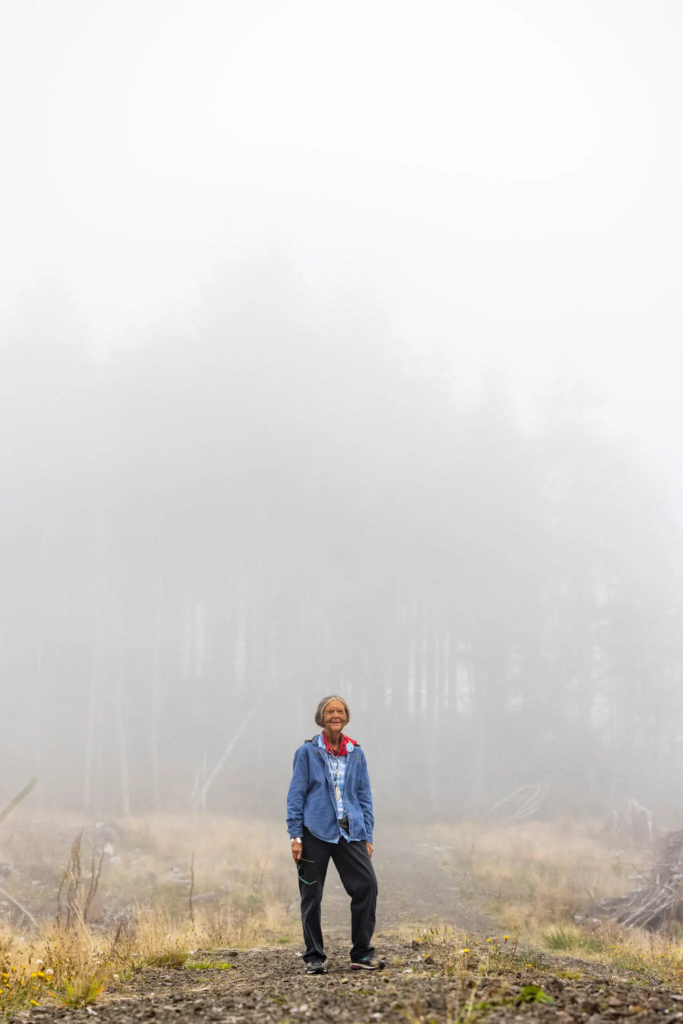
Charlene Nelson, chairperson of the Shoalwater Bay Tribe, on the hilltop to which the tribe hopes to relocate. The move could cost as much as half a billion dollars. “We need to start building,” she said.
One afternoon in September, an engineer on the project, Jeremy Ayala, drove an A.T.V. along the beach. The sand was littered with chunks of eroded soil, washed away by the tide and then spit back up onto the shore, tufts of vegetation still attached.
At the south end of the half-finished dune, a thick pipe discharged a slurry of sand and water, pumped up from the ocean bed. As the water drains away, the sand that remains forms that day’s portion of the barrier — another brick in the wall protecting the reservation from being erased.
Despite its massive proportions, the Corps predicts the dune will need rebuilding within 10 years. “Nature’s going to take over at some point,” Mr. Ayala said.
The council’s chairperson, Charlene Nelson, watched the dune’s construction.
Did she think the tribe would be able to relocate before its current home washed away? “I think we need to start,” Ms. Nelson said. “We need to start building.”
A washed-out road, and a clinic at risk
Even if the Shoalwater Bay Tribe wins a relocation grant, $3 million wouldn’t even be enough to build a road up to the new site, let alone put homes on it. The tribe has asked the Bureau of Indian Affairs for $1.2 million to create and staff a new department to manage its relocation efforts and seek other sources of funding.
Four hours north of Shoalwater Bay is the Makah Reservation, and a tribe with very different designs on the federal relocation money.
The reservation is composed of 47 square miles of mountains, valleys and glistening coastline at the northwestern tip of the continental United States. It is accessible only by a two-lane road that traces the north shore of the Olympic Peninsula, squeezed between the Olympic Mountains and the Strait of Juan de Fuca.
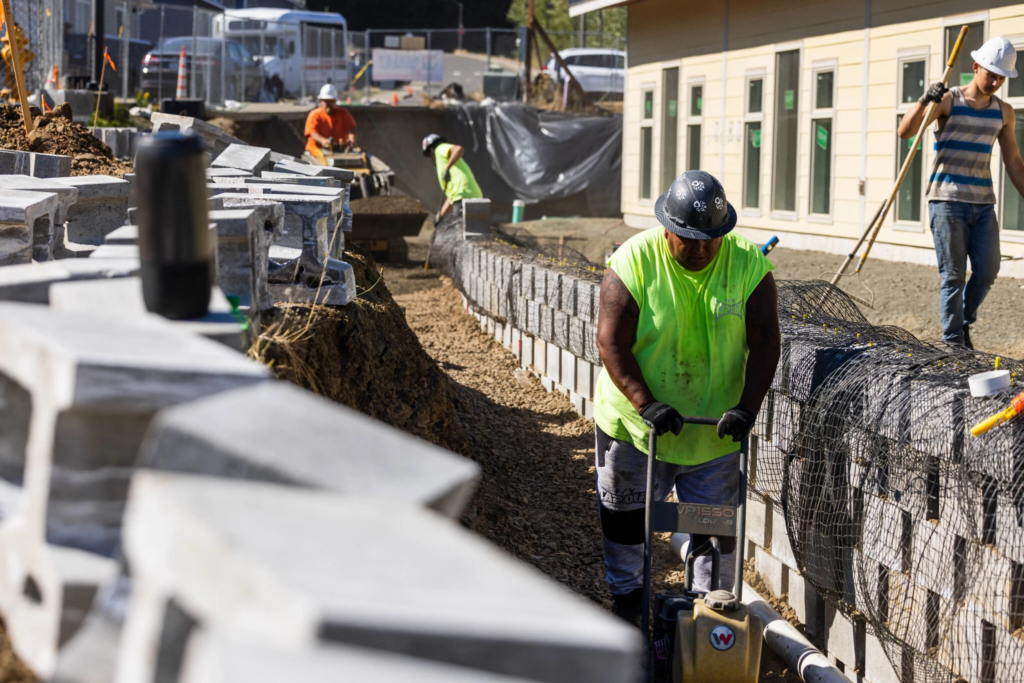
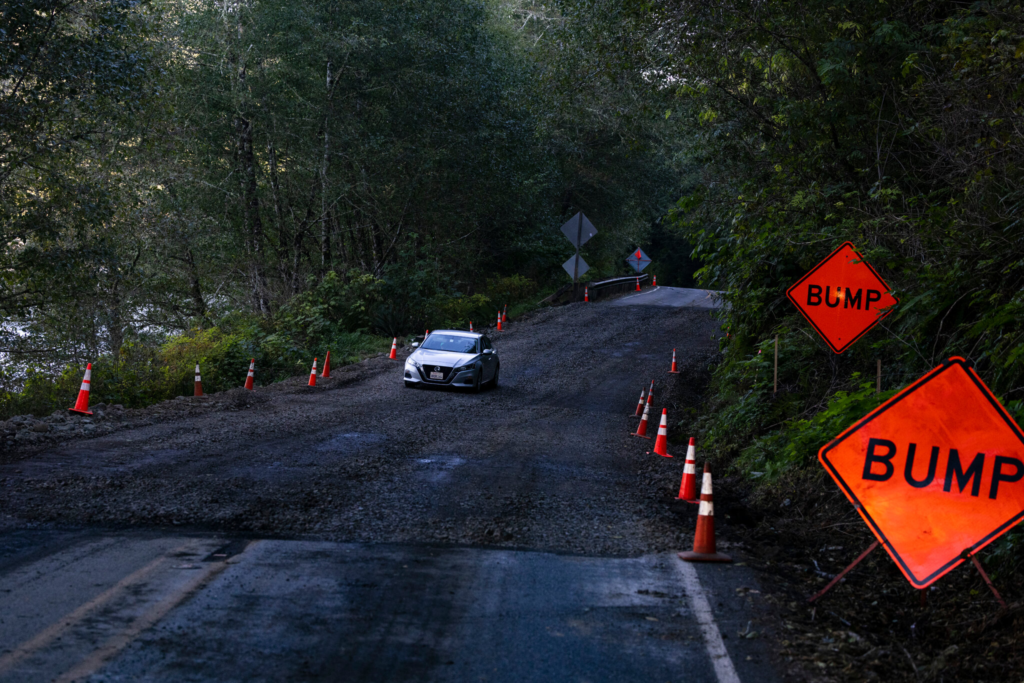

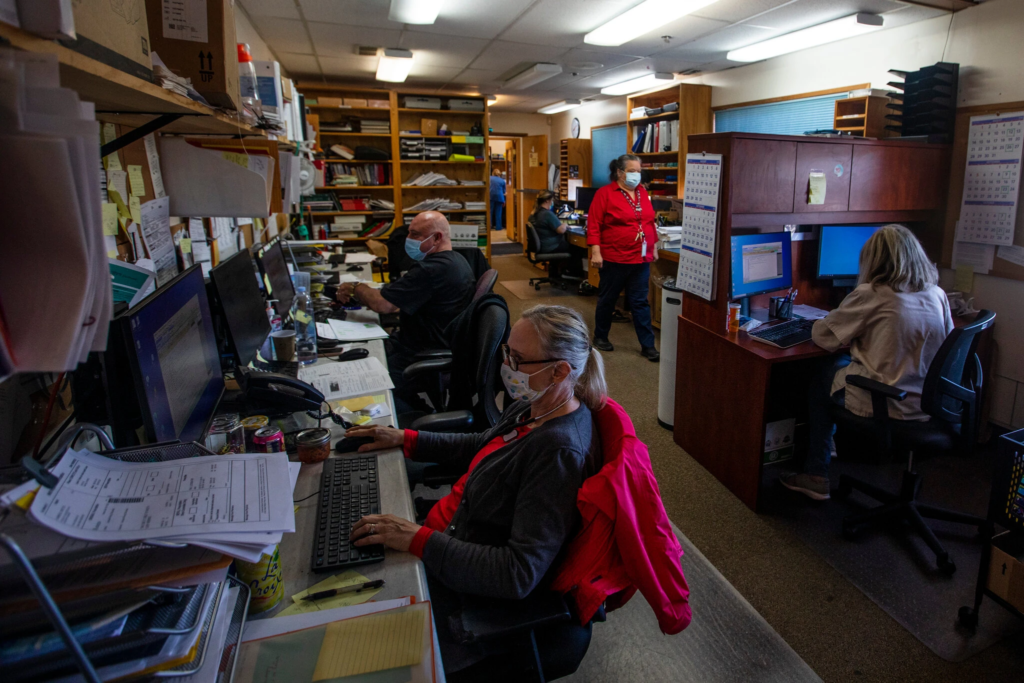
From the top working down, workers with the Makah Tribe finishing a preschool away from the water in Neah Bay; the only road to the reservation, being repaired following storm damage; the tribe’s cramped health clinic; and the proposed site of the new clinic, high above the coast.
That narrow road is often closed because of landslides, made more frequent by intense rain. When passable, it opens onto the town of Neah Bay, land where the Makah have lived for thousands of years. The town has a storybook quality: Fishing boats cluster in a sheltered harbor beneath a tree-covered promontory; cottages and restaurants face the bay.
But as storms worsen, the tribe is beginning to move. On a recent morning, Patrick DePoe, the vice chairman of the Makah Tribe, and Nate Tyler, its treasurer, toured a new community the tribe is building high above the bay. A preschool was under construction, next to an small apartment complex; across the freshly paved road was a row of handsome new houses.
“This was all empty lot until just recently,” Mr. DePoe said. “It’s an effort to move all of our neighborhoods up.”
Compared with Shoalwater Bay, the Makah Tribe has buildable land away from the water. The tribe also has a population ten times as large, as well as a fleet of commercial fishing vessels, a forestry company and other businesses that generate revenue.
But even with those advantages, the tribe needs help. Their next goal is to replace their 50-year-old cramped medical clinic with a larger, more sophisticated clinic away from the water.
“Having that facility I think will give me peace of mind,” said Elizabeth Buckingham, the clinic’s director.
The tribe has applied for the $3 million grant for the new clinic, estimated to cost $20 million. It would try to find other funding for the remainder. The construction site has been prepared — a neat rectangle of level ground high above the coast, waiting to be useful.
“It’s almost shovel-ready,” Mr. Tyler said.
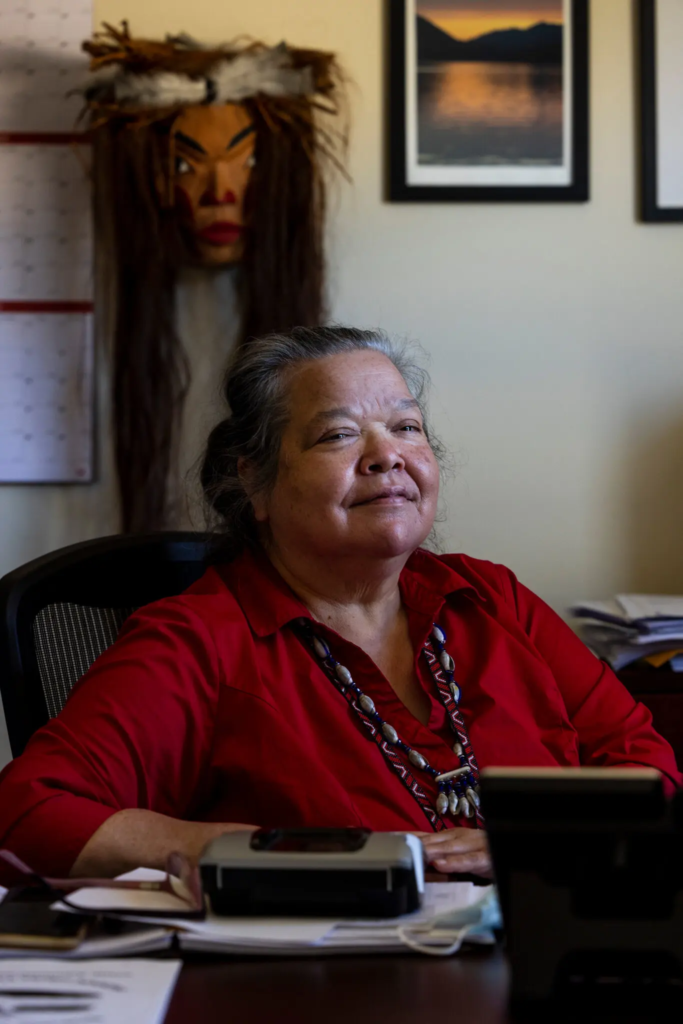
Elizabeth Buckingham, director of the Makah Tribe’s health clinic. Moving the facility away from the water “will give me peace of mind,” she said.
‘God help them’
If the Biden administration opts to fund projects that can be completed with the amount of money available, the Jamestown S’Klallam Tribe might move to the front of the line.
The tribe’s small reservation is about halfway between Neah Bay and Seattle, at the end of a quiet bay looking north to the San Juan Islands. But beneath the calm exterior, the reservation is buffeted by climate change.
The snowpack on the mountains behind the reservation is shrinking. Warming air has affected nearby rivers, making it harder for salmon to survive. The ocean is also warming, extending the algae bloom season, which makes the clams harvested by the tribe vulnerable to toxic algae for more of the year.
The tribe has adopted a strategy of improving what it can with the funding it can find. It is seeking $3 million from the relocation program to move just two small buildings. Actually, one and a half.
One of those buildings is a house; the other, right next door, is a compact two-story structure with offices on top and a lab below, which analyzes fish, clam and water samples to monitor evidence of climate change. Both buildings are too close to the water, said Robert Knapp, the tribe’s environmental planning manager.
The tribe proposed demolishing the house, replacing it with a similar structure up the hillside. But the money left over wouldn’t be enough to fully replace the office and lab building; instead, the tribe would keep in place the upper floor, and build a new structure to replace the lab downstairs, where floodwaters have come perilously close to entering.
“It’s a great package that B.I.A. has put together,” Mr. Knapp said, referring to the Bureau of Indian Affairs. After the slightest pause, he added, “It would be great if it was $3 billion instead of $3 million.”
W. Ron Allen, the chairman of the Jamestown S’Klallam Tribe, said he appreciated the predicament facing the bureau, as tribes nationwide face growing threats from climate change.
“You have 574 tribes in America, from Alaska to Florida, Maine to California,” Mr. Allen said. “The B.I.A., you know — God help them.”
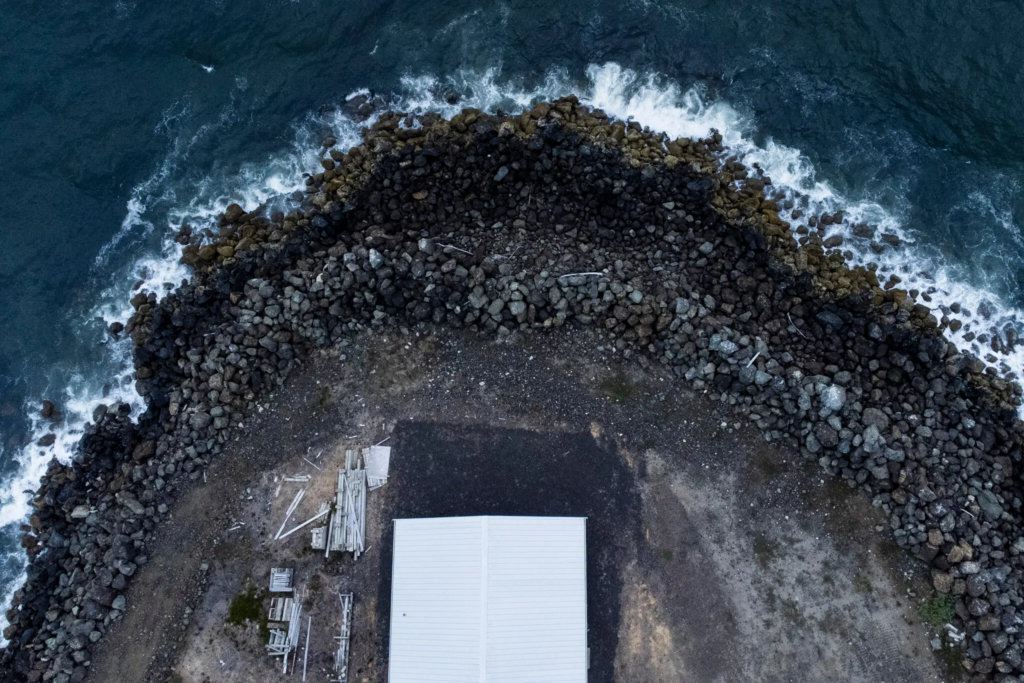
Coastal erosion encroaching on a house just north of the Shoalwater Bay reservation.
Christopher Flavelle focuses on how people, governments and industries try to cope with the effects of global warming. He received a 2018 National Press Foundation award for coverage of the federal government’s struggles to deal with flooding. @cflav
A version of this article appears in print on Nov. 3, 2022, Section A, Page 12 of the New York edition with the headline: As Waters Rise, U.S. Quietly Tests a New Strategy. Order Reprints | Today’s Paper | Subscribe
Here are some “ET’s” recorded from around the planet the last couple of days, their consequences, and some extreme temperature outlooks:
Here is some new October 2022 climatology:
Here is more climate and weather news from Thursday:
(As usual, this will be a fluid post in which more information gets added during the day as it crosses my radar, crediting all who have put it on-line. Items will be archived on this site for posterity. In most instances click on the pictures of each tweet to see each article. The most noteworthy items will be listed first.)
If you like these posts and my work please contribute via the PayPal widget, which has recently been added to this site. Thanks in advance for any support.)
Guy Walton… “The Climate Guy”